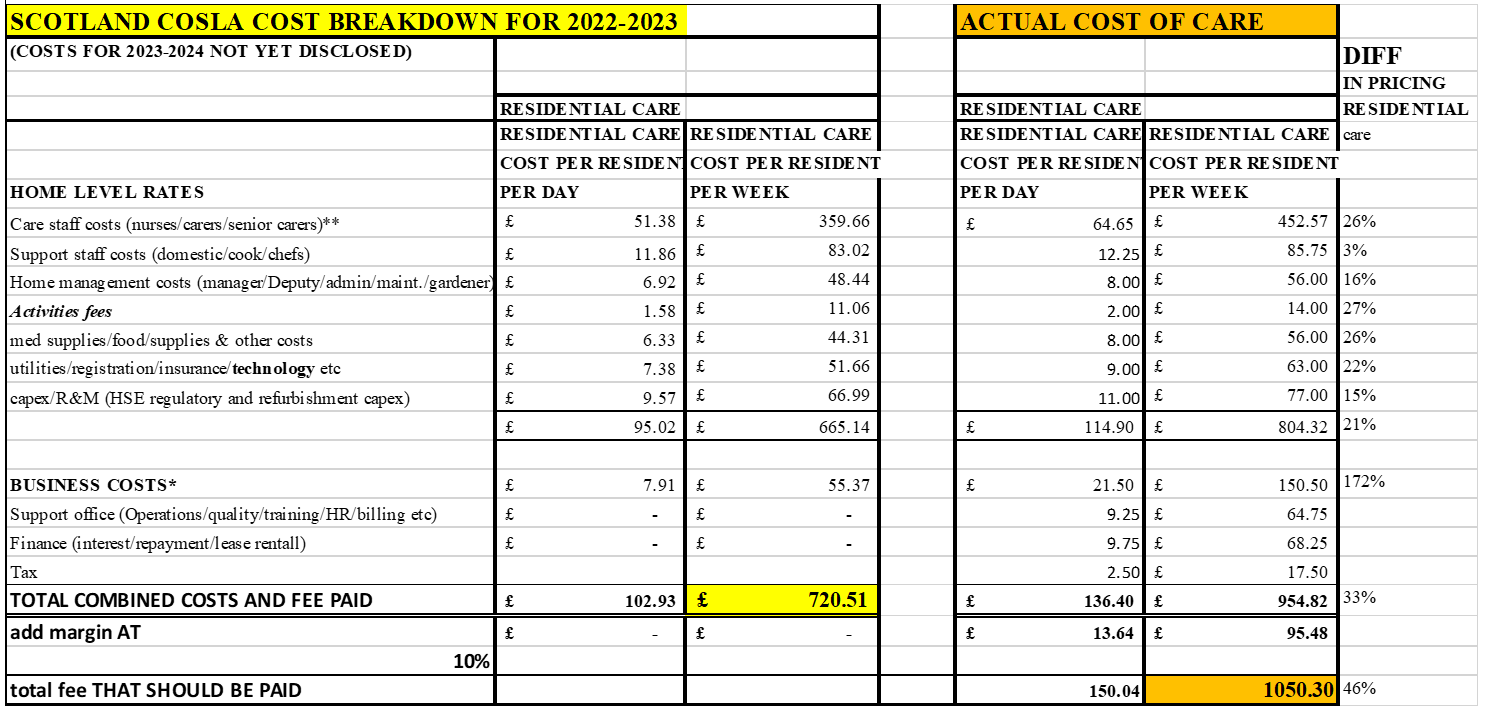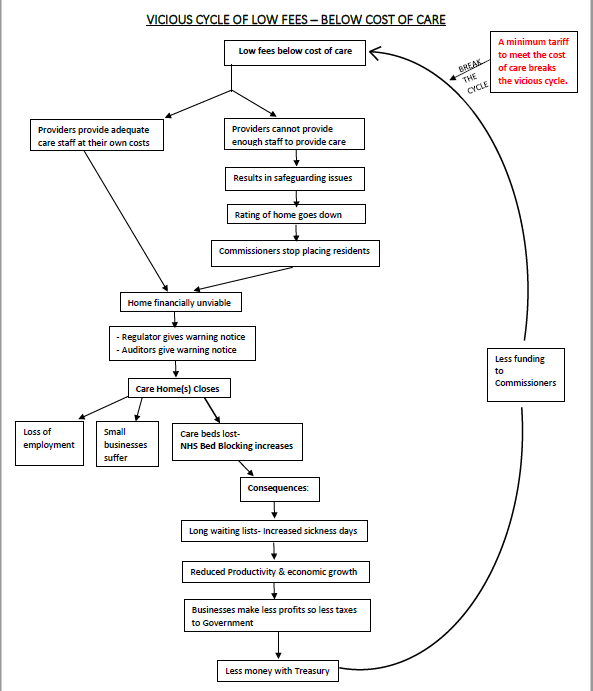Advinia Health Care's Open Letter to Care Commissioners
Dear sirs,
Thank you for proposing the fees for the financial year 2023-2024. However, the base cost over which the increases have been made was 50% lower than the cost of care. This has been indicated by the national audit office and kings fund reports. The Cambridge cost of care exercise gives a figure of £911 for residential and £1170 for nursing care. (attached).
I also attach for your reference the rates which Scotland (COSLA) were paying last year ie 2022-2023 for residential and nursing care and their breakdown alongside the actual cost of care. For residential it was £720 and for nursing £832, much higher than what the commissioners in England are proposing for the coming financial year. The Cosla rates in spite of being higher than England failed to take into account the actual cost of nurse and care staff recruitment, financing costs, tax payments and support office costs and the significant increases in material costs, which is pointed out in our analysis. Staffing costs and turnover is very high which is not accounted for nor the perpetual need for agency staff. This financial year Cosla proposed £756 for residential and £874 for nursing care but this has been unanimously rejected by all providers of care in Scotland for it does not allow for safe, financially viable care to be provided. Hence, Cosla is reconsidering the rates and providers are indicating they will not accept any fees below £920 for residential and £1150 for nursing, very close to the Cambridge cost of care.
We and other providers have received no information on the detailed breakdown behind the proposed fees which are still 40% lower than the cost of care and lower than the Scotland rates for even Fy 2023 -24. It is not appropriate for you to rely on providers to find self funders to subsidise these low fees, since the increase in cost of living, the number of self funders have reduced drastically. Further, you are not even allowing top ups or charges for extras.
Your costs do not cover the full cost of a carer or nurse to a company for on top of the gross hourly rate there is employer and employee NIC, training, holiday, sickness and other costs which has not been properly costed. Care staff are leaving the sector for hospitality and other sectors due to the poor pricing and inability of providers to increase wages to match.
To maintain safety to residents and financial viability of care homes your fees need to be raised to the actual cost of care. The vicious cycle gripping the economy can only be broken if the right fees is paid for care homes to look after vulnerable old people in a safe manner. As we all know, Care homes play an important role in supporting the community, reducing NHS bed blocking, which in turn reduces sickness days and creates a productive economy. Viable care homes provide employment in the community, support small businesses and by paying corporate taxes support funding for the commissioners indirectly.
Hence it is very important that in setting fees you consider the true cost of care. We have attached our analysis of the Scottish govts Cosla rates from last year as a reference to assist in a productive dialogue. We also attach the cosla analysis along with the impact of the vicious cycle of low fees for care (appendix 1 and 2). We also attach the new regime by the regulator to inspect commissioning of care and the Cambridge cost of care exercise.
Thank you,
Yours sincerely,
APPENDIX 1 – COSLA RATES FOR LAST YEAR VS ACTUAL COSTS OF CARE

Key Points – cosla rates against actual cost of care
- The cosla rates are based on a 50 bed nursing home with the incorrect assumption of 100% occupancy which is not possible due to void periods from residents passing away/discharged, with an average occupancy of around 89%.
- The total nurse/care staff cost per hour is taken at 30% lower than the true costs for it is difficult to recruit with high turnover in the sector resulting in ongoing recruitment costs.
- Activities has been priced at only £1.58 per resident per day which does not allow enough time for meaningful activity per day.
- Home management costs have been taken at a level far below market rates. It is impossible to motivate managers to take responsibility for vulnerable adults at the prices proposed.
- Food, utilites, capex have again been priced below market and significantly affects nutrition and service to vulnerable older people
- Insurance and the regulatory charges for registration has increased significantly and have not been factored.
- There is no provision for financing costs or government taxes or for required technology and software licenses.
- The provider return is shown at 4.5% gross which is meaningless when costs are below market with many important costs excluded creating a negative provider return and affecting viability.
APPENDIX 2 – VICIOUS CYCLE OF LOW FEES – BELOW COST OF CARE

